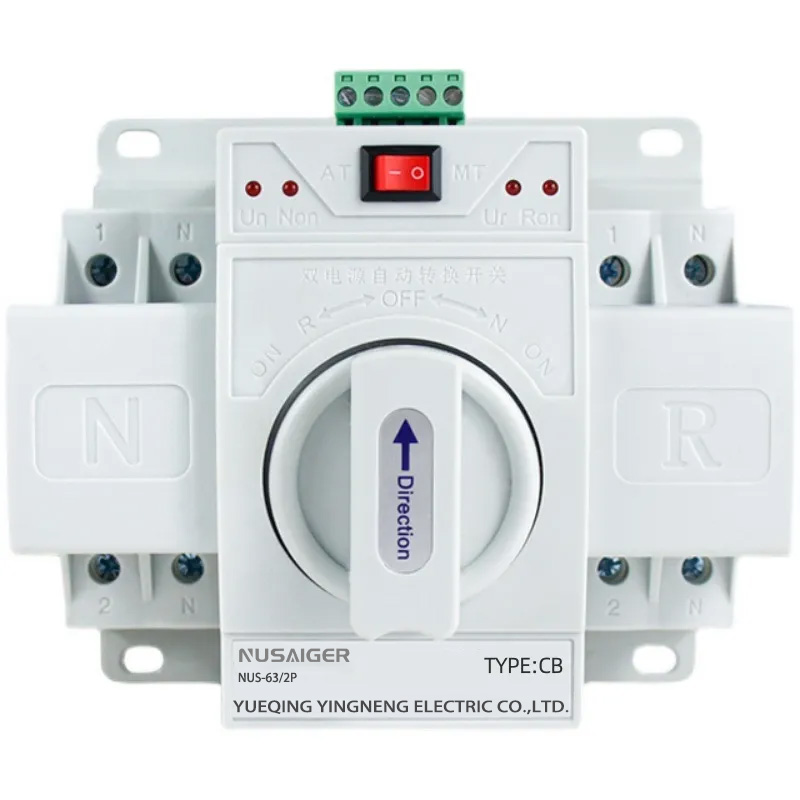Dual Power Supply Maintenance and Troubleshooting Guide: Ensuring Reliable Operations
Maintaining a dual power supply system is essential for uninterrupted operations in hospitals, data centers, industrial facilities, and commercial buildings. Proper maintenance and troubleshooting ensure the system performs reliably during power outages and emergencies. This guide provides detailed steps, best practices, and tips for keeping dual power systems in optimal condition.
1. Introduction: The Importance of Maintenance
Power outages can lead to financial losses, operational disruptions, and safety hazards. Dual power supply systems, including Automatic Transfer Switches (ATS), generators, and UPS units, must be regularly maintained to prevent failure. A proactive maintenance strategy reduces downtime and extends the lifespan of critical components.
2. Components of a Dual Power Supply System
- Automatic Transfer Switch (ATS): Monitors and switches between primary and backup sources.
- Primary Power Source: Usually utility grid, providing consistent supply.
- Backup Generator: Provides extended backup power in case of grid failure.
- UPS (Uninterruptible Power Supply): Supplies instant power to sensitive loads during transfer delays.
- Monitoring and Control Systems: SCADA or BMS interfaces for remote observation.
3. Preventive Maintenance for ATS
Regular ATS maintenance ensures smooth operation during power transfers:
- Monthly functional test to simulate power failure and verify transfer time.
- Inspect contacts for wear, pitting, or corrosion; clean as necessary.
- Check mechanical operation, including hinges, latches, and interlocks.
- Test control logic and firmware for anomalies.
- Verify communication modules and alarms for remote monitoring.
4. Generator Maintenance
Generators are critical for long-duration backup. Best practices include:
- Monthly no-load test to ensure start-up functionality.
- Quarterly load test at 50–75% of rated capacity.
- Check fuel levels, quality, and storage conditions.
- Inspect and replace air filters, oil filters, and coolant as recommended.
- Ensure battery health for automatic start systems.
- Keep exhaust systems clean and unobstructed.
5. UPS Maintenance
- Check battery voltage and perform capacity testing.
- Inspect capacitors, cooling fans, and internal wiring.
- Run self-diagnostic tests to detect anomalies.
- Keep UPS units dust-free and ensure proper ventilation.
6. Load Testing
Testing the dual power system under actual or simulated load conditions is essential:
- Use a dummy load or non-critical loads for testing generator capacity.
- Verify ATS transfer time and stability under full load.
- Check voltage and frequency accuracy during transitions.
- Monitor for overheating, abnormal vibrations, or unusual noises.
7. Common Issues and Troubleshooting
7.1 ATS Failures
- Failure to transfer → Check input voltage and control wiring.
- Delayed transfer → Inspect mechanical contacts and relays.
- False transfers → Investigate voltage fluctuations, grounding, and sensor calibration.
7.2 Generator Issues
- Failure to start → Check fuel supply, battery voltage, and starter motor.
- Low output voltage → Inspect voltage regulator and alternator.
- Excessive noise or vibration → Examine mounting, belts, and engine alignment.
7.3 UPS Problems
- Battery failure → Test individual cells, replace if capacity drops below threshold.
- Overheating → Check airflow, fan operation, and ambient temperature.
- Alarm triggers → Review system logs and perform diagnostics.
8. Safety Precautions
- Always disconnect power before performing maintenance.
- Use personal protective equipment (PPE) such as gloves and insulated tools.
- Follow manufacturer guidelines strictly.
- Ensure proper grounding before testing or repairs.
- Never bypass safety interlocks or alarms.
9. Documentation and Record Keeping
Maintaining detailed records improves reliability and simplifies troubleshooting:
- Log monthly functional tests and results.
- Document generator fuel consumption and maintenance dates.
- Keep ATS and UPS inspection records.
- Track any anomalies, repairs, or part replacements.
10. Real-World Case Study
A hospital in Singapore implemented dual power supply with ATS, UPS, and generator backup. Through regular maintenance, they detected minor ATS contact wear before failure. During a grid outage, the system switched seamlessly, keeping critical medical equipment operational.
11. Maintenance Checklist
| Component | Frequency | Key Checks |
|---|---|---|
| ATS | Monthly | Functional test, contact inspection, control logic check |
| Generator | Monthly / Quarterly | Start-up test, load test, fuel & battery check, coolant & oil levels |
| UPS | Monthly / Annually | Battery test, capacitor check, airflow & temperature, diagnostics |
| Load Test | Quarterly | Verify full load operation, monitor voltage & frequency |
12. Troubleshooting Flowchart
1. Identify problem (ATS, generator, or UPS)
2. Inspect visual indicators (alarms, LEDs, meters)
3. Verify input and output voltage
4. Check wiring, relays, and contacts
5. Test components individually
6. Replace faulty parts or adjust configuration
7. Perform system-wide test
13. Best Practices for Long-Term Reliability
- Establish a preventive maintenance schedule.
- Train personnel in ATS and generator operations.
- Use monitoring systems for early fault detection.
- Maintain spare parts for critical components.
- Plan for system upgrades to handle load growth.
14. Emerging Technologies
- IoT-enabled predictive maintenance for ATS and UPS
- AI-based load balancing and anomaly detection
- Integration with renewable energy for hybrid systems
- Remote monitoring and automated alerts for faster response
15. FAQ
- Q1: How often should I test the ATS?
A: Monthly functional tests and an annual full-load test. - Q2: Can I perform maintenance without shutting down the system?
A: Some checks can be performed live, but major repairs require disconnection. - Q3: How do I detect ATS contact wear?
A: Regular inspection and resistance measurement; pitted or discolored contacts should be replaced. - Q4: What is the lifespan of a generator in dual power systems?
A: Typically 15-20 years with proper maintenance. - Q5: Should UPS batteries be replaced periodically?
A: Yes, usually every 3–5 years depending on usage and environment.
Conclusion
Regular maintenance and timely troubleshooting are key to ensuring the reliability of dual power supply systems. By following preventive maintenance schedules, monitoring system performance, and addressing issues proactively, facilities can maintain uninterrupted power, protect critical operations, and extend the lifespan of their electrical infrastructure.



